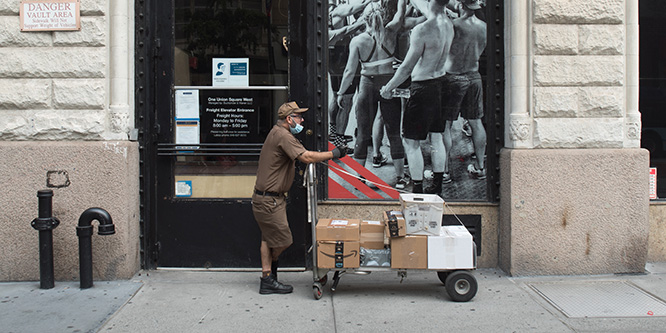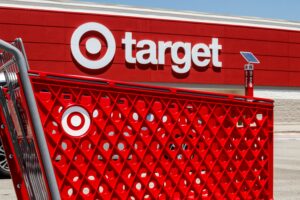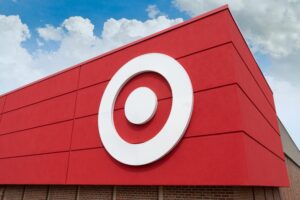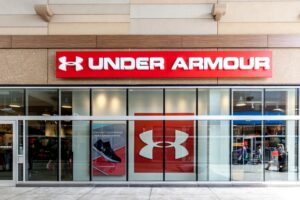
Photo: Getty Images/Massimo Giachetti
March 1, 2022
What’s the path to building customer centric supply chains?
According to a Gartner survey of supply chain leaders in the second half of 2021, 62 percent are investing in capabilities to capture, analyze and leverage supply chain specific customer satisfaction data to help drive commercial growth instead of focusing on cost-cutting innovations.
In a study last year, Deloitte likewise said the seemingly boundless customer data accessible online is enabling supply chains to react more quickly to market shifts and proactively address consumer needs to drive revenues and loyalty rather than their past dual focus on cost and speed.
Many supply chain organizations, however, are still believed to lack clarity on how to transform to be more customer centric.
In a study released last fall, KPMG concluded that, “A customer-centric supply chain is driven by visibility, insightful data, and a shared commitment to customers. It also looks to balance customer expectations with profitability, by delivering the desired customer experience without under or over-investing in capabilities.”
Gartner said c-level buy-in, goal alignment across the organization and clearly-defined metrics are required to drive customer centricity in the supply chain. Also seen as critical is listening at multiple interaction points and examining product use and/or satisfaction data to gain a better understanding of the customer at critical touchpoints. Gartner’s survey showed more than 60 percent of supply chain leaders investing in developing and maintaining access to voice of the customer (VoC) data.
Beth Coppinger, an analyst at Gartner’s supply chain practice, said in a press release, “CSCOs (chief supply chain officers) can use VoC data to identify problematic touchpoints — or the key drivers of customer satisfaction and dissatisfaction. It is crucial that data isn’t just collected, but also analyzed and acted upon.”
Deloitte said a broader challenge is building trust with consumers to gain better access to their data. Another core challenge is the “vast scope and volume” of data now being generated, along with the rising costs of shifting to new operating models. Deloitte wrote in its study, “As companies shift to digital-first and customer-centric supply chains, they will need to actively manage costs to maintain profitable growth.”
Discussion Questions
DISCUSSION QUESTIONS: What are the obvious and less obvious challenges to leveraging customer data to create a more responsive supply chain? What advice overall would you have about creating a customer centric supply chain?
Poll
BrainTrust
Recent Discussions







I’m happy there’s a motion to center the customer in supply chain transformation because the reality is that assumptions are made inaccurately about what the customer wants. Most consumers don’t need overnight delivery- they just need an item to arrive when they need it. The tricky part in leveraging customer data will be separating self-reported, idealistic desires from actual feelings customers have about product acquisition. Any customer will tell you they want an item immediately, but data will have to go a level deeper to determine how serious that expectation actually is.
Yes to all of this!
You might think we solved this problem 20 years ago, wouldn’t you? At the moment, it’s not a data problem, it’s a materiel and manpower problem facing the supply chain. Throw all the data you want at it and make it customer-centric (whatever that means to supply chains), we need more stuff, more people to process the stuff, more people to deliver the stuff, and more people to stock the stuff.
I would start by understanding the customer experience and leveraging technology that reflects that journey. Thinking about the voice of the customer (VoC), we must understand that the loudest voice of the customer isn’t always an accurate reflection of reality. Many of the voices are angry. I would spend a great deal of energy on focus groups and direct quantitative and qualitative research. The technology side requires inventory accuracy, and I would suggest the best way to do this is via RFID and realtime data in order to create a sense-and-respond supply chain nervous system. This is the way to react to the verities of today’s disruptive environment.
VoC data is important. But NPS and satisfaction charts are only management crutches. They track customer satisfaction (sort of) after the fact. But retailers actually need to give customers a direct line to a helpful human when things go wrong. When it comes to customer satisfaction, data is good; dialogue is better.
Assuming that retailers have 100 percent of the data they need, they would still not be able to get available inventory right more that 90 percent of the time. This is because pinpointing the exact time at which a retailer should have a unit of an SKU for sale in a specific store is possible but not probable. It should be easier to achieve customer satisfaction within the only sales channel because in that case, the available inventory is a fulfillment center stocking many more units of a SKU than a store should. But getting it right 98 percent of the time is extremely difficult, and the incremental cost of sales is probably not worth the effort. The law of diminishing returns.
A customer-first and agile supply chain is a critical value proposition to drive outstanding experiences. We have seen the emergence of a more prescriptive approach to supply chain planning that requires a data and analytics first strategy to get ahead of the demand curve and anticipate the impacts of the global supply chain disruptions.
Agile supply chain planning includes streamlining the sourcing, procurement, manufacturing, shipping, and fulfillment processes. In addition, assortment and inventory optimization strategies will help retailers always have their key items in stock. Most importantly, retailers and brands have to take a more transparent and open approach with customers to set proper expectations on when the goods will be available and enable personalized tracking capabilities along the shipping journey.
The winners in this supply chain disruptive phase we are experiencing are those retailers who have a diversification strategy of leveraging their stores as micro fulfillment centers, driving a distribution center hub model, and even considering a vendor drop-ship model.
Customer data can be fragmented and siloed. It’s not enough to have the data, you need someone to interpret it using a supply chain lens. That way you can use it to enable:
But to do this you need true inventory visibility and lead times across the supply chain so you can promise against inbound inventory when it will still meet the needs of your customer.
Customer-centric supply chains are a good idea. As the article rightly pointed out, it requires C-level buy-in and alignment of merchandising which is front-end operation and product development and sourcing which is a back-end function. There is a several-week/few month gap between the two because of lead times.
So what does it really mean to be customer-centric from a supply chain perspective? It means analyzing available data to understand the negative factors as well as the positive side. It means not just doubling up on what customers bought, but understanding why customers are not buying. Is it because of front-end issues on pricing, positioning, and promotions, or the back-end issues – quality, availability, and relevance?
It requires much greater alignment between category management, marketing and merchandising, and the whole supply chain – the alignment required is orders of magnitude higher than doing just one function such as marketing better.
But this is the way to go and grow. We can bet that more sophisticated companies are looking at ways to create their competitive advantage and this surely is one of the ways.
The consistent thread across all the advisory firms quoted here is access to customer data. Customer-centricity relies on the retailers understanding their customers. It requires “listening at multiple interaction points” and “maintaining access to the voice of the customer.”
The most obvious challenge to using this data is getting access to this data. Over time that means they are also using it responsibly and in a way so that the customer perceives value from the relationship. This means being good stewards of their data — from a security standpoint, but also from a usage perspective. Creep factor is a big deal for consumers.
I think the most important thing for retailers to remember here is that relationships go two ways. Listen and react responsibly, and give the customer value from sharing their data.
All this talk about data. But here’s the thing — data has a shelf life relative to the nature of the product it is talking about. Data on seasonless basics has a long shelf life. You can predict Spring 2023 sales based on Spring 2022 (and prior) data. Trend lines don’t usually change that dramatically (excluding pandemics). Even seasonal key items can be somewhat predictable from year to year. It’s in the pure fashion category that data has a relatively short shelf life. This year’s data can’t predict next year’s results. Hitting a trend on the nose this year doesn’t mean you’ll be as lucky or as smart next year. Ditto if you bomb this year. Apparel retailers need a time/action calendar that operates in a window where the data being collected can impact production so that the product hits the selling floor while that data is still valid. Sounds like a definition of “fast fashion,” but I prefer “smart fashion.” Data driven fashion needs to evolve from being an oxymoron to a reality. It’s not just data. It’s data + time. Data has a shelf life.
As others have noted, there’s some risk to supply chain teams trying to interpret the voice of the customer – especially when other teams are doing that as well. Where the supply chain can win with the consumer is through improving processes and experiences that make things better for the consumer.
One great example is the returns process – consumers expect large companies to have good return policies and yet it doesn’t seem that anyone has truly tried to figure this out yet – from letting consumers just keep products rather than process the return, to stringent return policies that upset the consumer.
Returns are a monster supply chain problem that would benefit the consumer.
It is amazing how much consultant speak can be uttered to describe something that has been known for a very long time. Customers are the key to a successful business and the supply chain is central to delivering that success. However to read about the consultants here you would believe that customer-centricity and cost effective supply chains are at odds with each other. They are not and retailers should use all the data available to them to ensure that they are listening to customers to provide what they want, where and how. That same information will help them drive a more efficient supply chain. The really important word here is information, not data. If all the retailer collect is lots of data that does not provide insight and information then they will be left in the dark, not understanding their customers or where their costs are. If they can use it to gain insight, they will achieve success in both customer satisfaction and cost management, or efficiency as I would prefer to call it. Cost cutting never made a retailer successful in the long term. Innovation, insight and efficiency is what makes great retailers successful.
Fundamentally, retail is about supply and demand. A customer-centric supply chain is simply one that ensures that consumers are able to find what they need at the right price with as little friction as possible through the channels they prefer. The balance here is essential because just solving one or the other will not suffice. It starts with consumer demand and fully understanding how it evolves and how it differs across channels, regions and categories. Having a solid, data-driven understanding of demand and the right pricing and promotional practices is powerful, because it doesn’t just help understand demand, but informs retailers how to best shift it from one product to another when the supply chain is stressed to continue to meet consumer needs. Investing in advanced planning, OMS systems and channel experiences will be critical to fixing tomorrow’s supply chains – but retailers also need to elevate their consumer experiences today by better understanding demand and leveraging the right analytics and pricing solutions to “guide” their consumers as needed and uphold the delicate dance between retail’s two fundamentals.
When it comes to a responsive Supply Chain, leaders should keep in mind that low-cost procurement cannot be the end goal. More and more customers are now buying consciously. They care about the effects of their action on the environment and the world as a whole. These customers will always be willing to spend a higher price to ensure that the product, packaging, and delivery methods are all environmentally friendly. So, the bigger challenge, I believe, would be:
a) to rethink supply chain practices to ensure supply chain leaders meet the customer expectations.
b) find niche customer groups who understand the sustainability values and appreciate the sustainability practices.
Before diving headfirst into creating a customer-centric supply chain, leaders should first create processes that allow employees to understand what their customers expect in terms of supply chain practices. This method won’t need any tech breakthroughs and would be entirely based on human interaction. The supply chain department should spend more time with the sales/customer service departments to better understand customer pain points, analyze how they can be addressed, and accordingly improve their solutions.